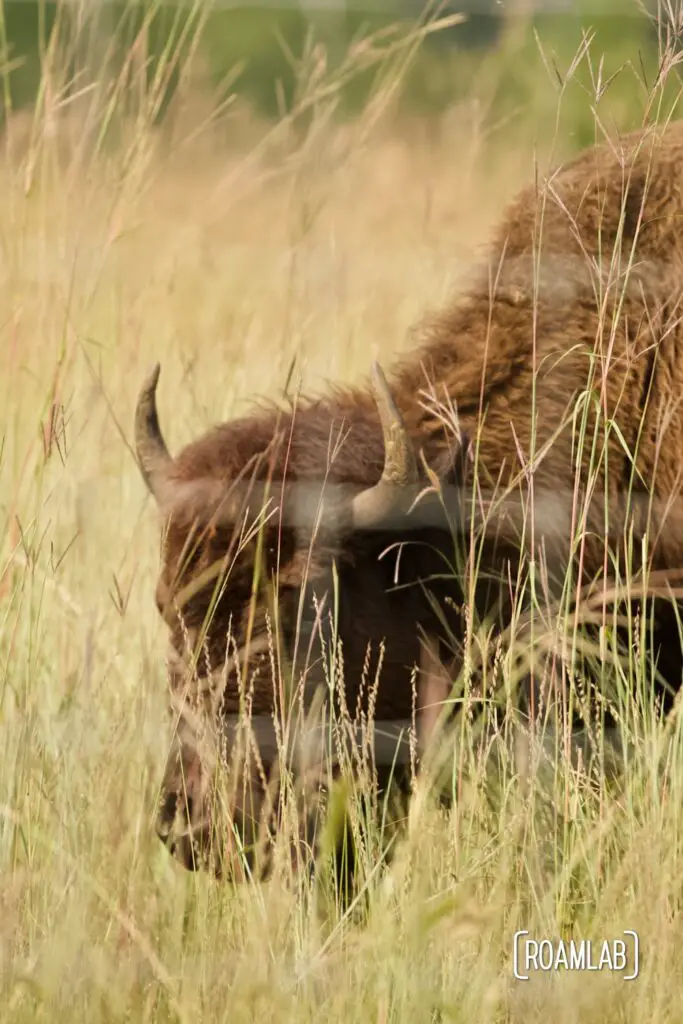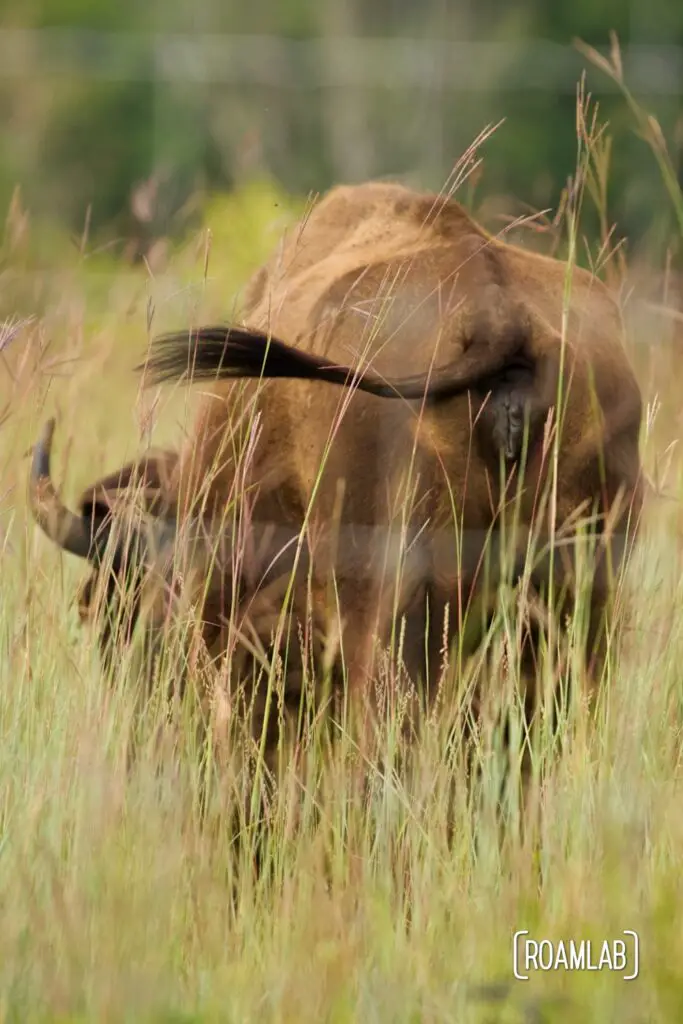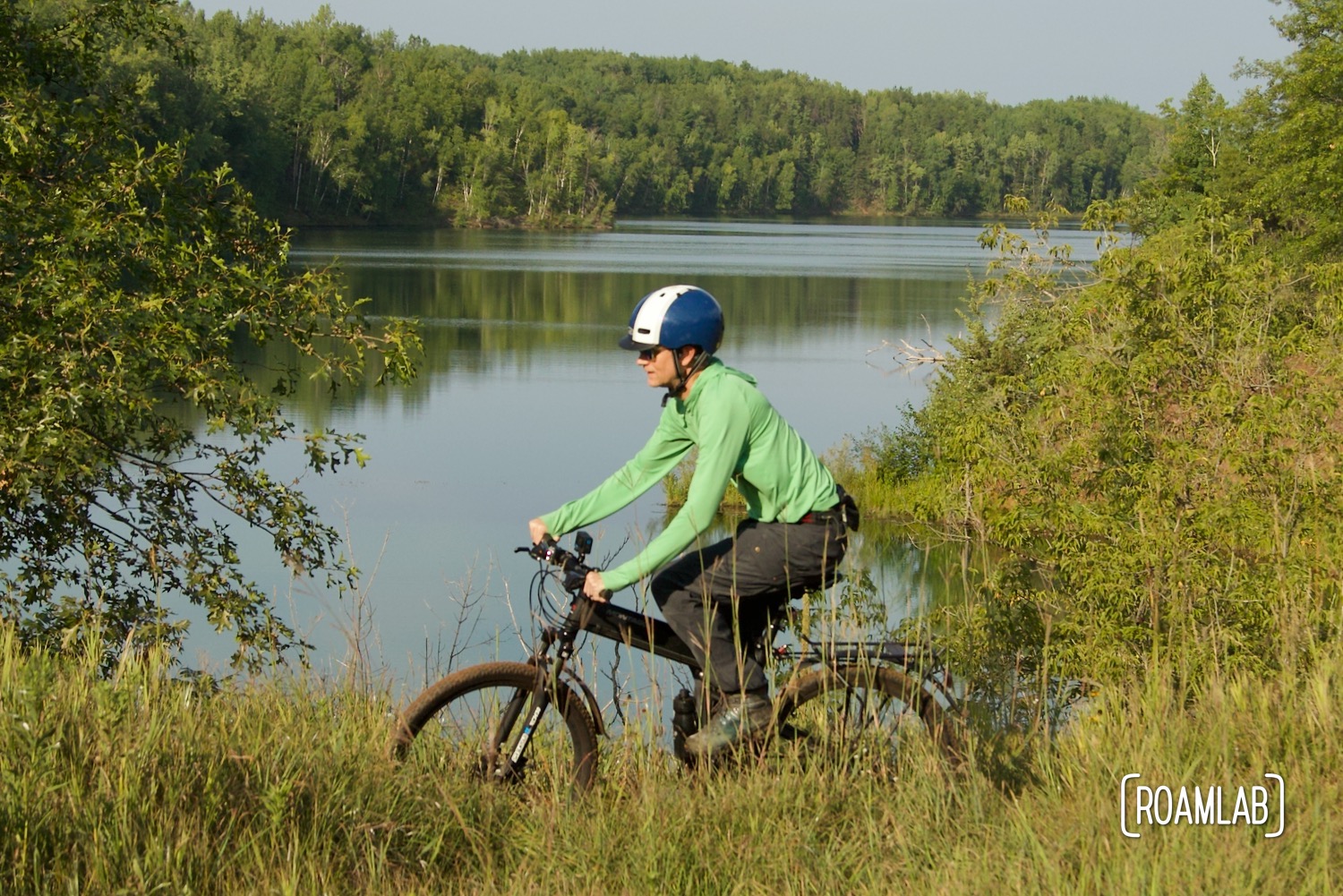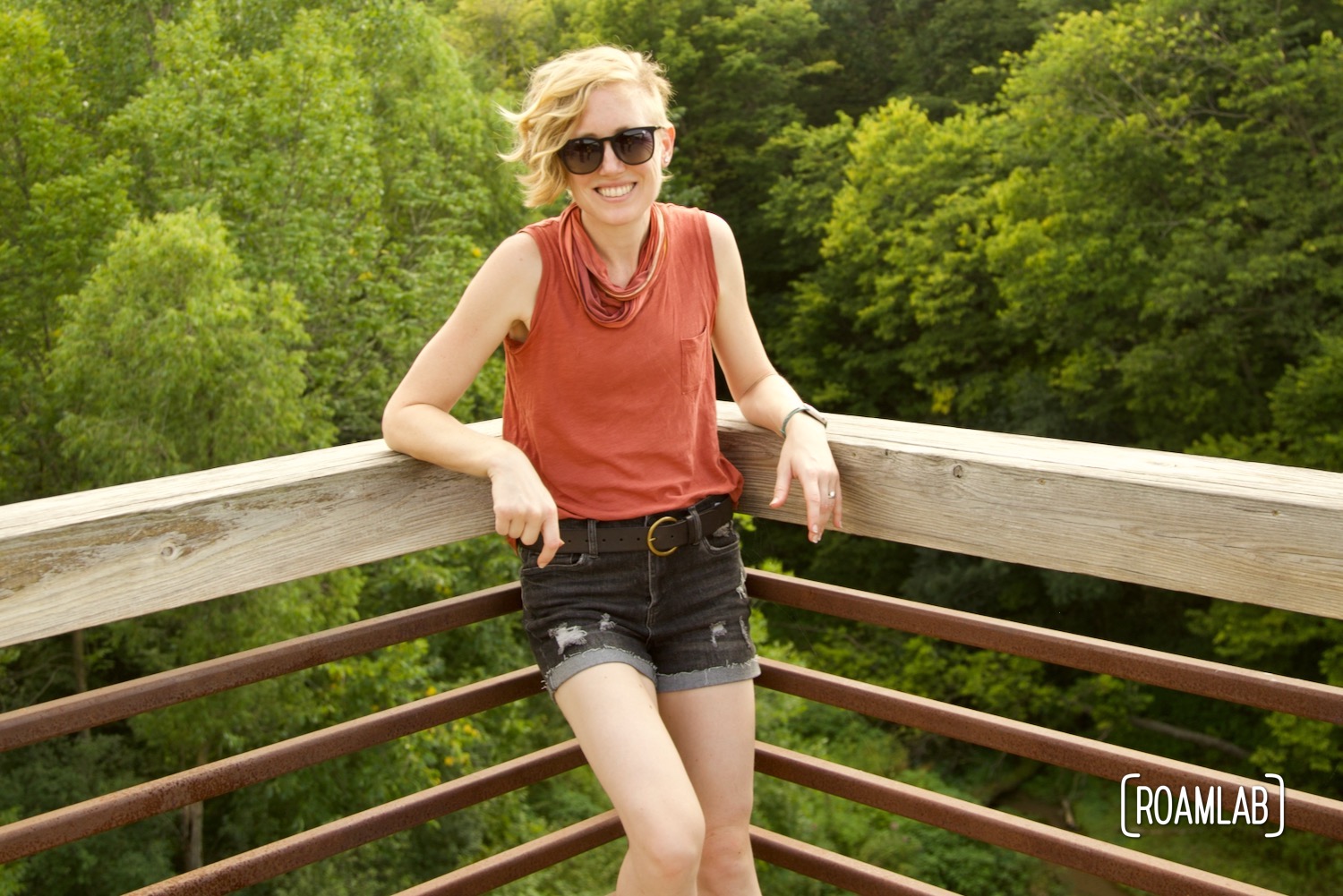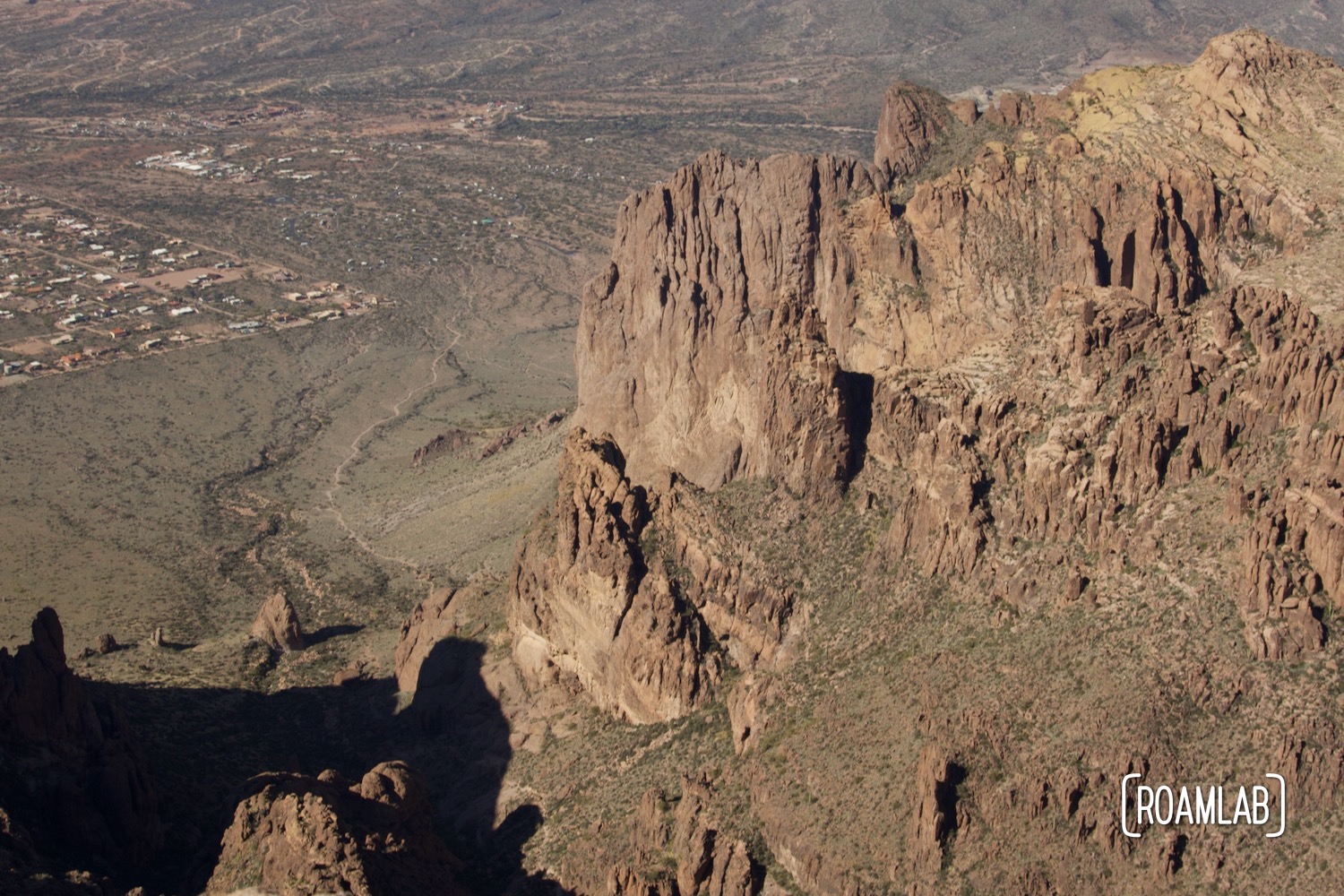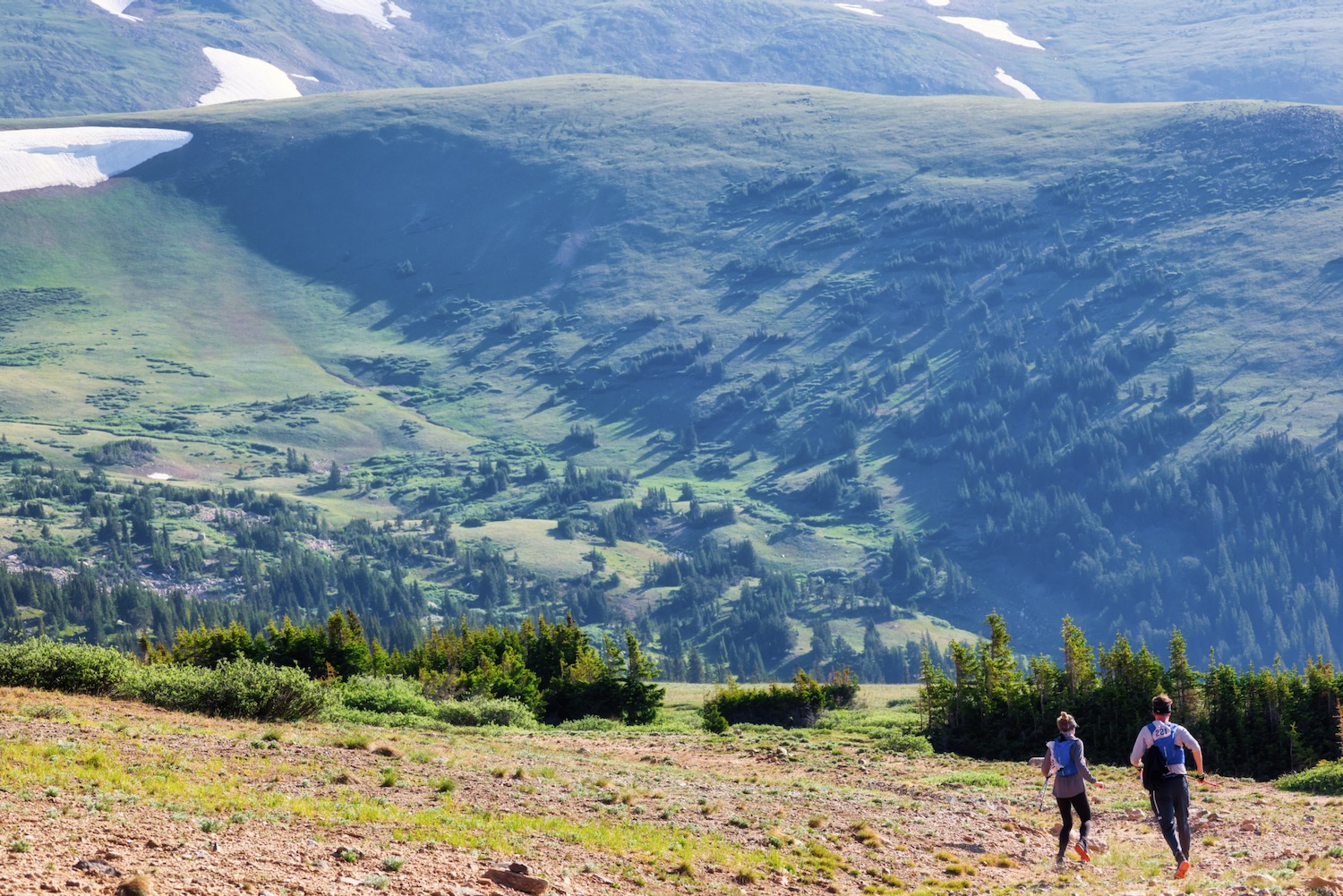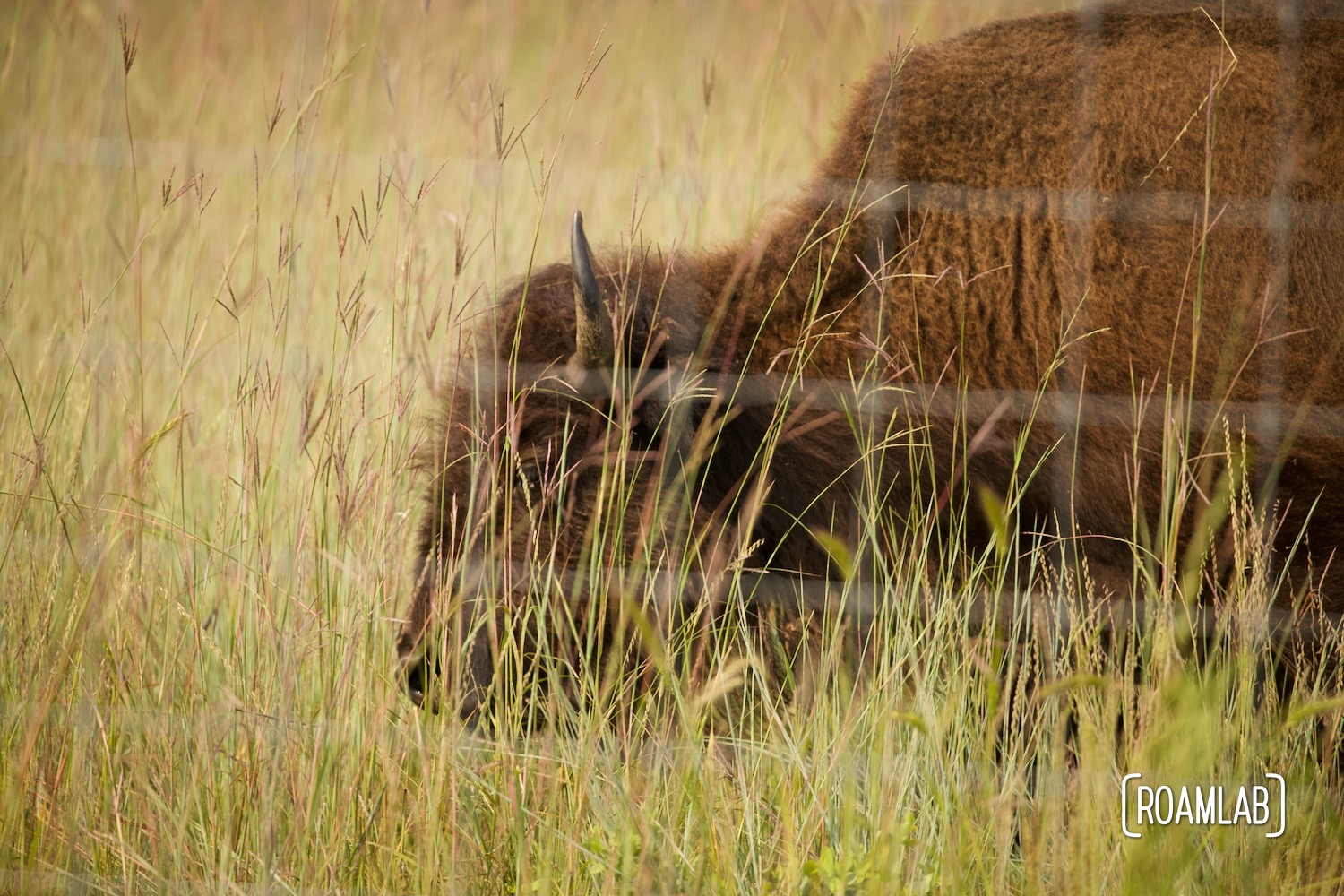
Bison are a relatively new addition to Spring Lake Park Reserve in Dakota County, Minnesota. The park has long been working to reintroduce a native prairie environment. Along with planting native plants comes the reintroduction of native animals which played an active role in managing and seeding the prairies by grazing. These bison may be new to Spring Lake Park, but before people hunted them nearly to the point of extinction, the bison grazed this land. By cropping the tall grasses, the bison made room for other native plants to grow. Seeds from plants would attach to their hairy hides and be transported to other parts of the prairie to grow.
Now, with their reintroduction, visitors can see these grand giants in the park. The herd rotates between three paddocks on the west side of the park, viewable from the paved mixed-use Mississippi Greenway trail.

Viewing the Bison Prairie
There’s no guarantee of seeing the bison, though. The trail is at the same level as the prairie, where the grasses grow so tall that they obscure even these massive grazers. When we first pass the Prarie, we don’t see the slightest hint of bison. I had read ahead and knew the bison would be in the central paddock at that time, but with no overlook and a forest line where the bison could be finding shade, we look for them with no avail.
The ideal time to view bison is in the morning and evening when the bison are more active. They wander as a herd, grazing as they travel. As the morning grows late, the bison tend to retreat to shade until temperatures drop in the evening.
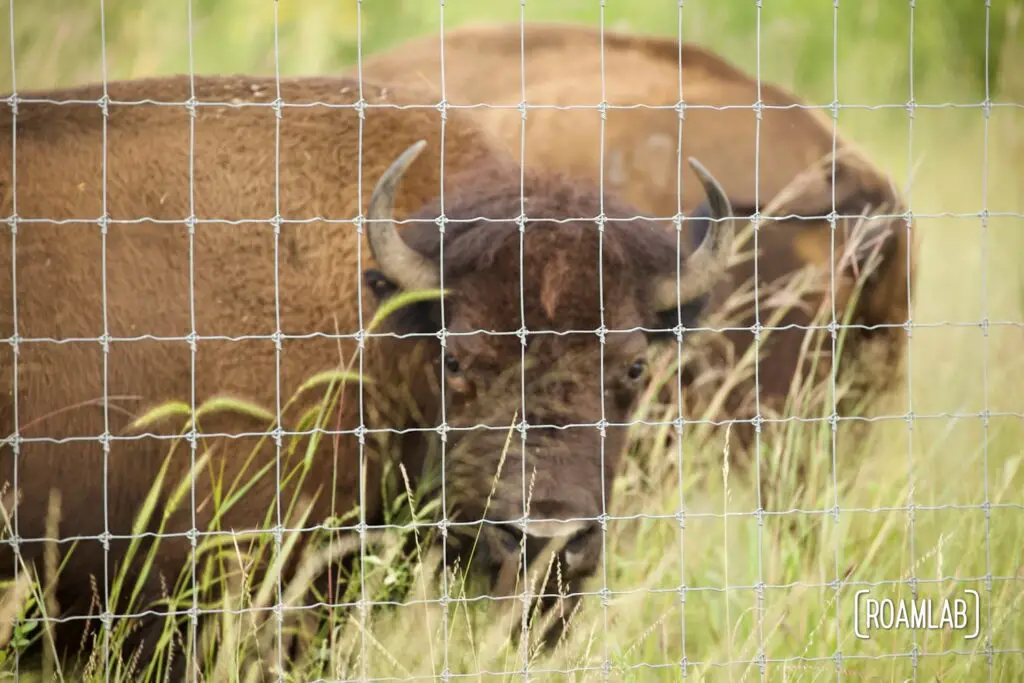
Our Experience
I know that our 2 p.m. visit could be scuttled by overheated herbivores. But we try nonetheless. And with neither hide nor hair seen of the massive beasts, I hope to salvage the stop by at least catching some views of the Mississippi further down the trail. So we continue down the Mississippi Greenway before turning back.
Strangely, on our return, while we do not see them, we can smell them. As we follow the trail, skirting the paddock, I look for their shaggy coats in the grasses. By the time we reach the end of the fencing, Chris is already so disappointed that he charges on to the end of the trail. I have to yell at him to stop. After all, he had walked right past the herd, only a few feet from the fenced line. As we watch, adult and adolescent bison graze on the prairie grasses, even wandering right up to the fence. It is tough to catch any of the bison in focus, as the autofocus kept getting confused by the fencing. As a result, my clearest shot appears to be one of a bison’s rear. But at least we get to see something that many visitors to the park miss. We even wave down a few cyclists to point out the bison.
We certainly have had less obscured bison experiences in Land Between the Lakes and the Grand Tetons, but that doesn’t negate the powerful moment of looking directly into the big brown eyes of a bison only a few feet away.
